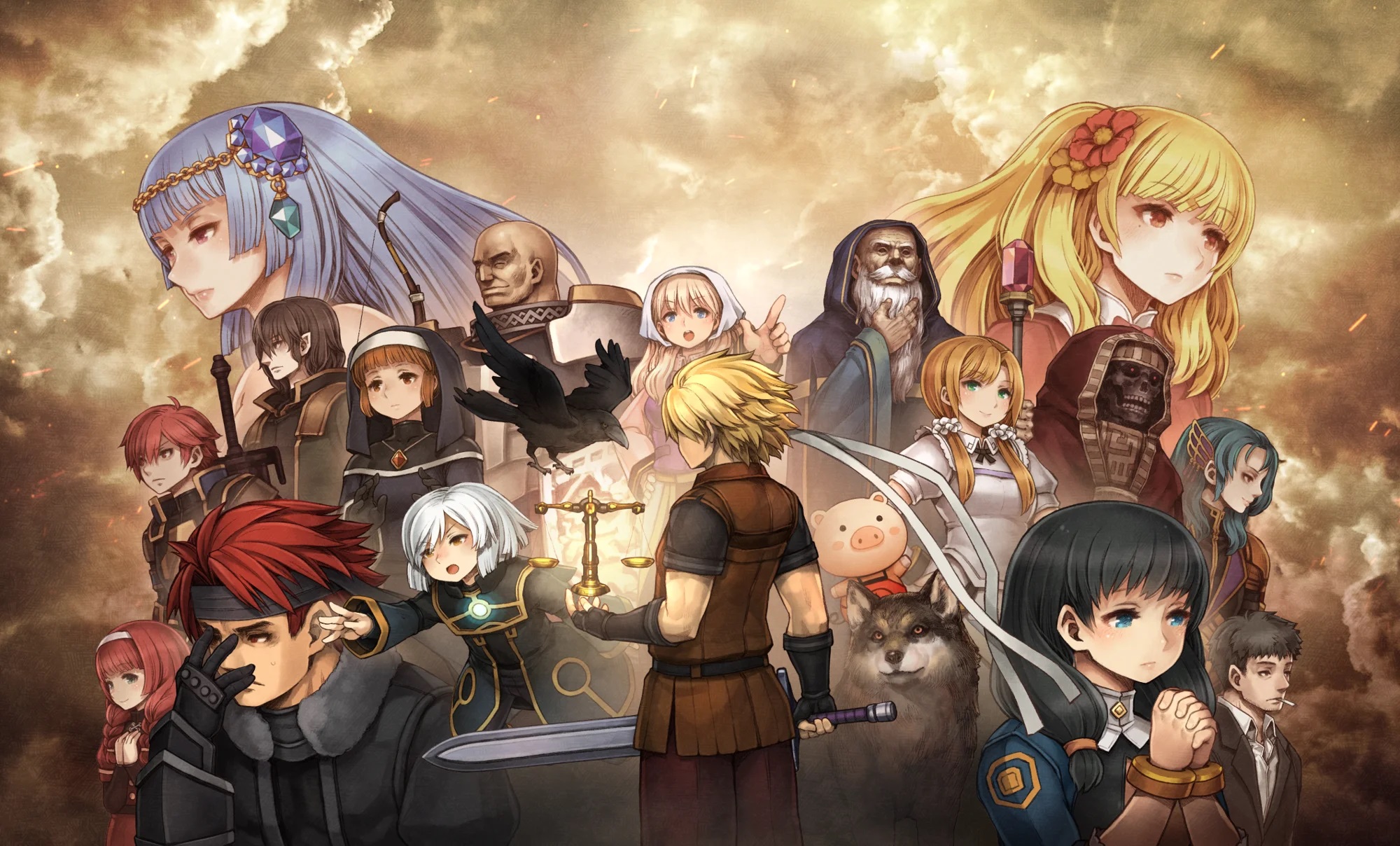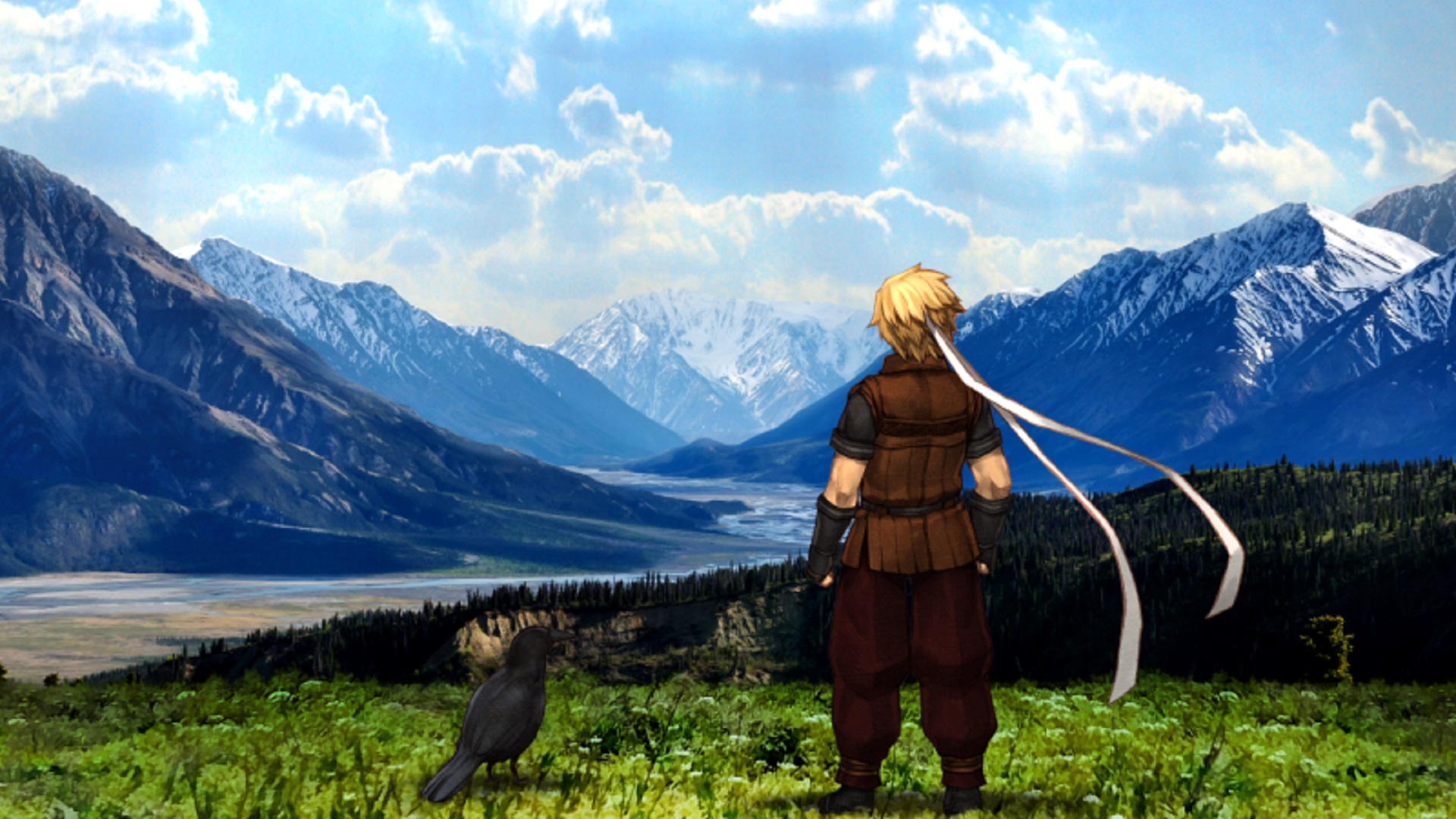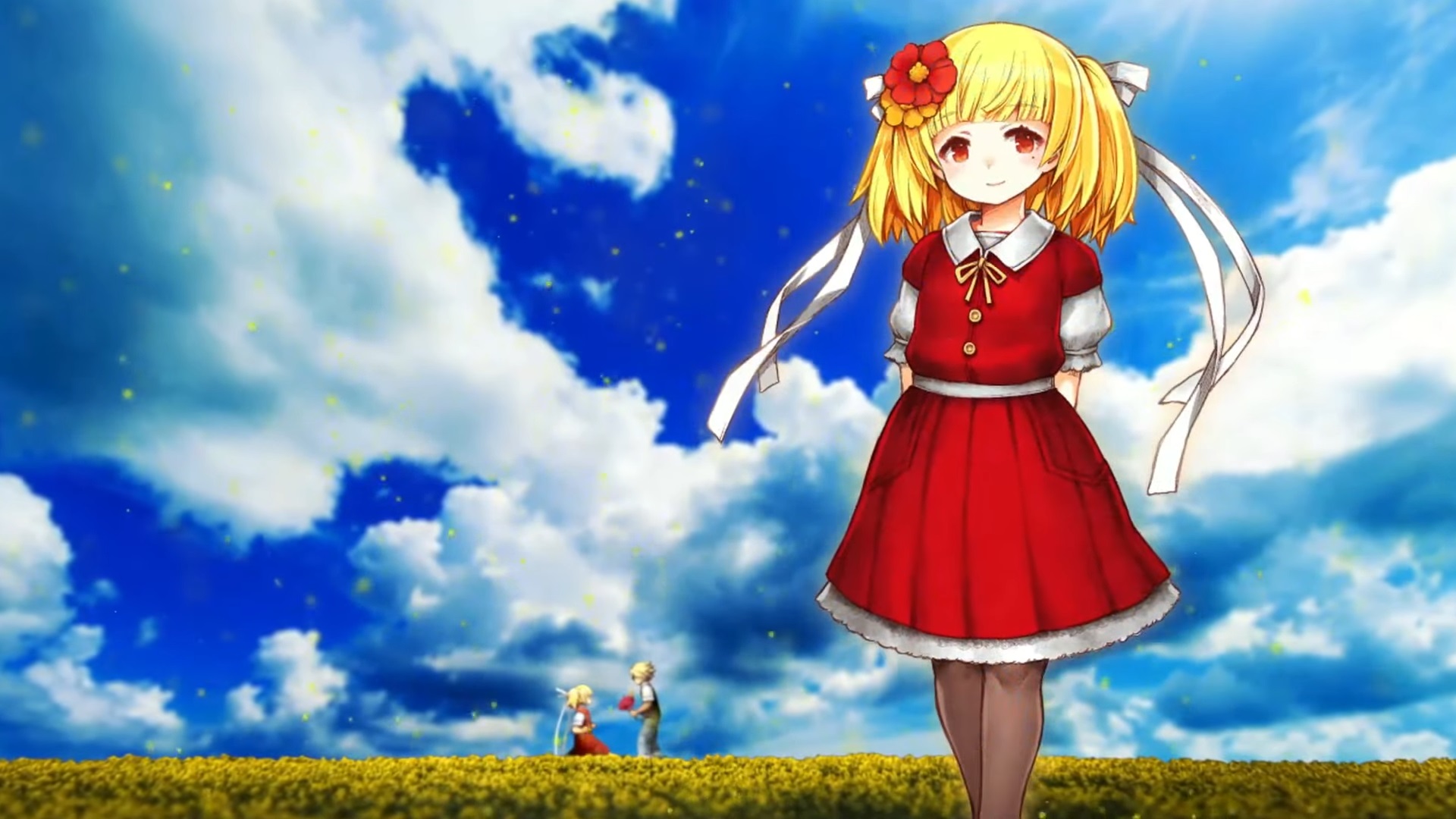Meet the Japanese solo dev who spent 15 years making the bizarre game that's secretly one of the highest-rated JRPGs on Steam and a personal favorite of mine
Astlibra Revision creator Keizo explains the making of the unexpected epic

Astlibra Revision, a side-scrolling JRPG that I once lovingly described as looking like a breaded and deep fried NES game, was one of the biggest surprises of 2022. At the time, it seemed like it came out of nowhere. In reality, it was not only a polished re-release of Astlibra's free version, which isn't listed in English on any major platforms, but also a game 15 years in the making. And it was all the work of solo Japanese developer Keizo, whose dev name, I've now learned, comes from his real name. After what's probably still the wildest 60 hours I've had with a game in years, I ended up becoming a diehard fan of this grungy, absurd, heartfelt adventure, and it's been stuck in my head like a catchy song ever since.
I wouldn't blame anyone for bouncing off of it even if I personally love what it is
In the best way possible, Astlibra Revision truly feels like a game that was made by one person over the span of 15 years. I can't imagine an experience like this coming from any other environment. It is see-it-to-believe-it weird. It is jank and obtuse in a way scarcely seen since the 1990s. The talking dog, omniscient crow, cake-forged swords, time travel Möbius strips, and sci-fantasy religious dogma are mere garnish on an unhinged feast.
Much like games like Death Stranding, it is so precious and single-minded with its vision that I wouldn't blame anyone for bouncing off of it even if I personally love what it is. And it is, to put it kindly, an off-kilter game carried primarily by sheer spirit and a magic system that kicks more ass than Doom Guy's right foot. But clearly, that vision has clicked with a lot of people. At the time of writing, it has over 21,000 user reviews on Steam alone, with a 95% "overwhelmingly positive" score. (It's also on Switch.)
Needless to say, I was delighted to see Astlibra Revision get a $10 DLC earlier this year called Astlibra Gaiden: The Cave of Phantom Mist, which takes the same 2D combat formula and throws it into a roguelike-esque procedurally generated dungeon. It is, unabashedly, more Astlibra – more combos with satisfying hitstop, more massive bosses, and a smaller but still fractal narrative with a new protagonist.
With a team of scientists and unlimited funding, you probably couldn't produce anything more tailor-made for me than a roguelike spin on Astlibra. I've fallen in love with the game all over again, so I was downright over-the-moon when I finally had the opportunity to talk to Keizo (via translator) to discuss the origins of this ridiculous, unforgettable game.
Responses edited for clarity and length.
The history of Astlibra Revision

GamesRadar+: Just so I have things straight, can you clarify how long Astlibra Revision and now this Gaiden DLC were in development, and what the major chapters of that development process were?
Weekly digests, tales from the communities you love, and more
Keizo: Astlibra Revision: Free version took over 14 years with some pauses, and the Revision version took about 1.5 years. Gaiden DLC: Free version took three months upon completion of Chapter 5 of the main game, and the Revision version took about 1 year.
Why did it take 14 years to finish this game?
The main reason it took 14 years is that I only had 1-2 hours to work on it after coming back from my day job, and there were times when I gave up and halted development, only to pick it up again later.
How did you stay motivated, especially creatively, working on the same game for 14 years? Did you work on other games along the way?
The reason I was able to complete the main game was that it felt wasteful to abandon what I had created so far. Along the way, my motivation waned multiple times, leading to pauses in development. During these periods, I became interested in trying out popular authoring tools like Unity and ended up creating and playing around with a puzzle game for fun. This eventually evolved into a puzzle RPG, resulting in the smartphone game Magicus.
It was a miracle that the story came together in the end.
Keizo
How long do you think your next game might take you to make? Hopefully not 14 years!
I'm thinking of keeping it short this time, but I plan to start with learning authoring tools again, so I'm expecting it to take more than three years. And I believe I won't be able to create another game on the scale of Astlibra.
Do you ever think about how many games you can reasonably make in your lifetime? How do you weigh that creatively?
I think about this question from time to time. The decline due to aging is something I'm acutely aware of. Despite that, I wish I could create about two more works.

What game development experience did you have when you started working on Astlibra Revision?
When I was in middle school, I created a game using RPG Maker. The only player was a friend of mine. Then in high school, I used a [shmup] creation game called Dezaemon to make a [shmup] called KEIZO.
What pushed you to make your own game, rather than make games with a team at an established company?
Due to my parents not being at home, I lived a life where I had to rely on the income from delivering newspapers to graduate from high school, so it wasn't a life that could lead to working at a reputable company. Making games was fun for me, it felt like playing games while creating them.
Development consumes a significant portion of one's life, so finding joy in the process is everything.
Keizo
When did you first have the idea for Astlibra Revision?
I started creating it simply because I wanted to play an action RPG, so the story and system were things I added bit by bit later on. There wasn't an original idea to begin with, instead it was more like the game eventually took this shape as a result.
How did that idea evolve throughout development? The story goes through so many twists and turns that I have to imagine you were expanding as you went along.
Exactly. The story evolved gradually as development progressed. The Japanese term "行き当たりばったり[go with the flow]" fits perfectly. Therefore, it was a miracle that the story came together in the end.
As a solo developer, which aspects of game development are most challenging for you? What do you consider your strengths and weaknesses as a designer?
If your question is to ask which part it is that I find the most difficult, I would say it's the story. With storytelling, there are no clear answers. Once the flow of ideas stops, I might end up thinking about it for months, feeling like it will never be completed. Also, I would feel demotivated when working on all other parts of the game if I had compromised on the story. For the other parts, there's a comforting assurance that, no matter how much time it takes, there is progress as long as I keep working.

I was immediately struck by Astlibra Revision's art style, especially the level design. Some levels almost look like something from a totally different game. What's your history as an artist, and what was your goal for the art style? I'm also curious about the role of Vanillaware artist Shigatake in the project.
Regarding the design of the monsters, I've used entirely free materials, so the designs might feel like they could appear in other games because they come from different creators. I don't have an artist background or specific goals.
I intend to continue making games on my own in ways that I like.
Keizo
In the Revision project, Shigatake's role was to refine the character portraits, weapons, armors, and 2D character designs. Originally, all characters were also based on free materials from various artists. The refinement process was aimed at achieving a uniform level of design and quality. Some characters and bosses were also designed by Shigatake.
Do you feel like you are "finished" with Astlibra, or do you still see room for more content and more improvements?
I feel that it is completed. Probably, the fact that it was released to the world in the form of publication made it feel like it had come to a complete end.
What pushed you to make the Gaiden DLC a roguelike-style mode with a different gameplay flow?
The reason for creating Gaiden was that there was no clear timeline for completing the main game. At that point, around Chapter 5, which was roughly halfway through, I wanted to release something smaller that felt complete. Therefore, I couldn't afford to spend a lot of time on it, and the biggest bottleneck was the creation of the map. I decided to use random dungeons as a way to reduce the workload involved in map creation. So, it’s just that the dungeons are random. I personally don't consider it a roguelike game.

How has the huge success of Astlibra Revision affected your life? Do you think you will stay a solo developer?
As for the impact on my life, I am grateful that the sales allowed me to send my kid to cram school. There weren't any other significant impacts. As for future plans and goals, I intend to continue making games on my own in ways that I like.
What would you say to people who are looking to get into game development, especially within Japan?
Development consumes a significant portion of one's life, so finding joy in the process is everything. It is both the goal and the daily achievement. I believe it is important to never forget that. Regardless of what awaits beyond completion, consider it an additional story, not the core. I hope that one could develop games with this mindset.

Austin has been a game journalist for 12 years, having freelanced for the likes of PC Gamer, Eurogamer, IGN, Sports Illustrated, and more while finishing his journalism degree. He's been with GamesRadar+ since 2019. They've yet to realize his position is a cover for his career-spanning Destiny column, and he's kept the ruse going with a lot of news and the occasional feature, all while playing as many roguelikes as possible.


